There are many variables that impact manure composition. These variables include livestock type, stage of growth and ration, amount and type of bedding, type of manure storage and amount of liquids added (rain, wash waters, runoff etc.), length of time in storage, agitation, manure treatments (e.g., anaerobic digestion, aeration, additives, separation) and weather.
Soluble nutrients are highest in the liquid (urine) portion of manure, while insoluble nutrients are primarily found in solids (feces). Figure 1 illustrates the typical distribution of nitrogen, phosphorus and potassium between the urine and feces. Bacterial urease from feces promotes the breakdown of urea in urine to ammonia and makes it more vulnerable to volatilization loss both in storage and during land application.
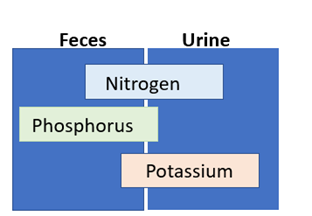
Although feed efficiency is continuously improving, there is still a significant amount of nutrients fed in the ration that are excreted in manure. The best method of determining nutrient content of manure is to take a manure sample. A manure analysis can also be a valuable tool for evaluating feed rations and identifying potential nutrient imbalances or optimizing feed utilization.
Taking a manure sample
It is difficult to manage a material that isn’t measured. A manure sample and analysis will provide an assessment of nutrients contained and provide the information required to estimate the available nutrients.
The nutrient content of manure varies from farm to farm based on many factors, including livestock type, production stage of the livestock, ration, bedding, type of storage, length of storage and water management. Ideally manure is sampled as it is being land applied. This provides the best estimate of nutrients being applied to the field and considers storage losses and the amount of agitation or the distribution of solids in the storage. The liquid portion of manure is generally higher in ammonium nitrogen and potassium, while the organic nitrogen and phosphorus are higher in the solids portion of the manure. In an unagitated liquid storage, the overall nutrient value of the manure at the bottom of the storage can be significantly higher than manure from the top of the storage.
Ideally manure will be sampled regularly to provide a database of reliable information and will help to establish the impact of management changes. Taking a manure analysis at the time of application will prevent using the information to calculate application rates. Using data from previous analyses or from a database of similar operations Ontario Manure Database will allow subsequent fine-tuning of fertilizer savings or additional fertilizer needs.
Sampling Liquid Manure
Sampling manure involves collecting a representative sample to analyze. The analysis is only as good as the submitted sample. The steps outlined below provide a guideline for sampling liquid manure.
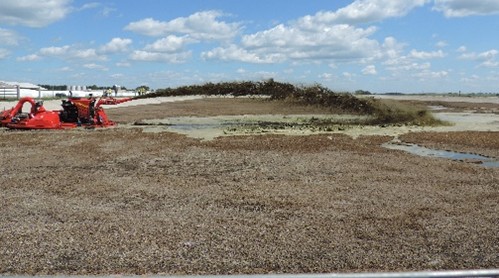
Step 1: Agitate manure storage thoroughly.

Step 2: Collect random sub-samples of manure while the storage is being emptied (from various depths).
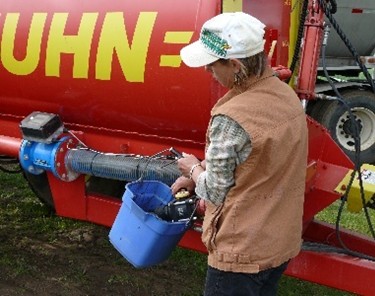
Step 3: Sampling should occur while storage is being emptied (i.e. sample every 10 loads or every 60 minutes from drag hose pump.
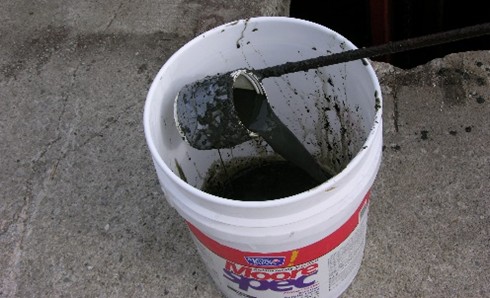
Step 4: Use a clean plastic pail to collect sub-samples. Store in a shaded, cool location.
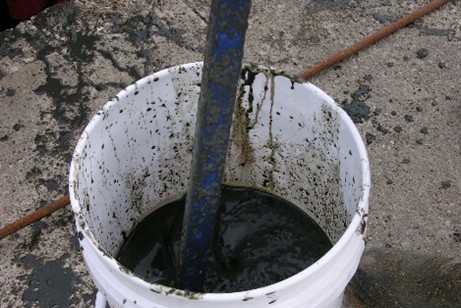
Step 5: Mix 10-20 sub-samples thoroughly in a larger pail and transfer a small sample to a plastic jar. Fill the jar only ½ – ¾ full to allow room for gas buildup.
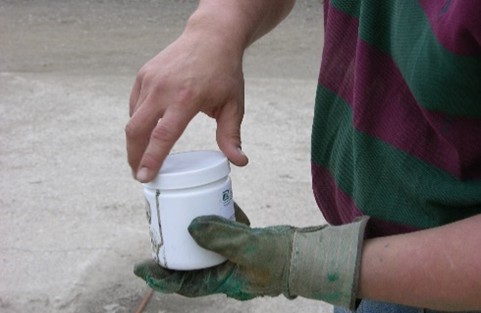
Step 6: Store sample in a cool place until sending to lab. Place sample in a plastic bag for additional containment and to minimize odour.
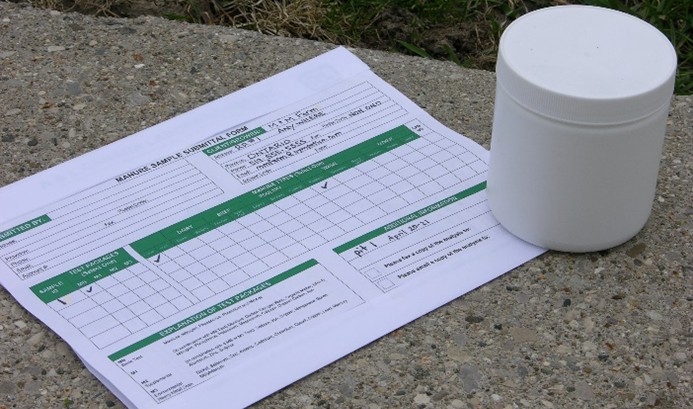
Step 7: Send samples with submission forms. Avoid shipping near end of week to avoid samples sitting in warm area over weekend.
Step 8: Submission forms should include the operation name and address (contact info), manure source (subtype and storage, if applicable), and type of analysis (standard, including micronutrients, and/or including OM, C:N, pH)
Step 9: Additional notes (record keeping (e.g., date and time of sampling, stage of pump-out (top, middle, bottom of storage), agitation (none, partial, thorough), weather at application may help with analysis interpretation.
Sampling Solid Manure
It is more difficult to get a representative sample from solid manure, especially if there is more than one livestock manure type included in the storage. The following are guidelines for sampling solid manure.
- Samples of solid manure can be taken from the spreaders during application or from the top, middle and bottom of the storage.
- On concrete or clean plywood surface, take sub-samples (a forkful) of manure from several different loads throughout the application or from the different areas of storage.
- Chop and mix the sub-samples together using a fork or shovel.
- Divide the larger sample into four equal parts and discard three.
- Continue to mix and subdivide until the sample will fit into a plastic sample jar or zip-plastic bag (holding one-half litre or 2 cups).
- Place sample jar into a plastic bag (or double bag) and ship to lab as per liquid sample.
- Repeat sampling procedure if a portion of the manure will be applied to a different field.
- Each storage system (or areas within the same storage with different manure type or dry matter contents) should have its own sample taken to reflect dry matter and specific nutrient content.